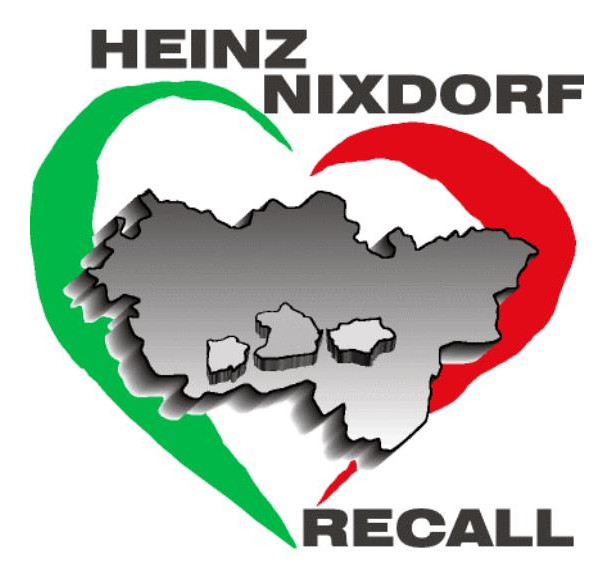Source-specific air pollution effects on inflammation, cardiovascular risk factors and cardiovascular and cerebrovascular events (AIRFLAMM)
Epidemiologic studies have linked elevated levels of particulate matter (PM) air pollution to increased cardiovascular and cerebrovascular morbidity and mortality. One plausible mechanism by which PM air pollution is thought to influence the development and progression of cardiovascular diseases is the induction of immunologic changes of the innate and the adaptive immune system. Within AIRFLAMM we investigate the temporal correlation between different air pollutants and different markers of inflammation and immunological activation, as well as a possible intermediate role of these markers on the effects of air pollution on cardiovascular, cerebrovascular and metabolic endpoints, such as hypertension, diabetes mellitus, MetS, NAFLD, and subclinical atherosclerosis. Additionally, we investigate the effect of source-specific (traffic and industry emitted) PM on cardiovascular and cerebrovascular events and risk factors using the 10-year follow-up data from Heinz Nixdorf Recall Study. For exposure assessment, we apply the EURAD-CTM, a dispersion and transport model provided by the Rhenish Institute of Environmental Research that permits the differentiation between source-specific particles. We also use the EURAD-CTM exposures to investigate associations with various other outcomes, including kidney function and liver disease.
| Funding | DFG JO 170/8-1; DFG HO 3314/4-3 |
| Duration | Phase 1 2009-2014, Phase 2 2015-2019, extended analyses ongoing |
| Team | Sarah Lucht, Frauke Hennig, Clara Matthiessen, Simone Ohlwein, Vitalijs Rodins, Vanessa Soppa, Anna Buschka, Barbara Hoffmann (PI) |
| External collaborators | Karl Heinz Jöckel, Susanne Moebus (Institut für Medizinische Informatik, Biometrie und Epidemiologie am Universitätsklinikum Essen), Hermann Jakobs (Rheinisches Institut für Umweltforschung, Universität Köln) |
Selected Publications
- Lucht S, Hennig F, Moebus S, Ohlwein S, Herder C, Kowall B, Jöckel KH, Hoffmann B. All-source and source-specific air pollution and 10-year diabetes Incidence: Total effect and mediation analyses in the Heinz Nixdorf recall study. Environment International 2020; 136:105493. doi: 10.1016/j.envint.2020.105493.
- Rodins V, Lucht S, Ohlwein S, Hennig F, Soppa V, Erbel R, Jöckel KH, Weimar C, Hermann DM, Schramm S, Moebus S, Slomiany U, Hoffmann B. Long-Term Exposure to Ambient Source-Specific Particulate Matter and Its Components and Incidence of Cardiovascular Events – the Heinz Nixdorf Recall Study. Environment International 2020. doi: 10.1016/j.envint.2020.105854.
- Lucht S, Hennig F, Moebus S, Ohlwein S, Herder C, Kowall B, Jöckel KH, Hoffmann B. All-source and source-specific air pollution and 10-year diabetes Incidence: Total effect and mediation analyses in the Heinz Nixdorf recall study. Environment International 2020; 136:105493. doi: 10.1016/j.envint.2020.105493.
- Ohlwein S, Hennig F, Lucht S, Matthiessen C, Pundt N, Moebus S, Jöckel KH, Hoffmann, B. Indoor and outdoor road traffic noise and incident diabetes mellitus: Results from a longitudinal German cohort study. Environmental Epidemiology, 2019 Feb; 3(1), e037.
- Lucht S, Hennig F, Moebus S, Führer-Sakel D, Herder C, Jöckel K-H, Hoffmann B. 2019. Air pollution and diabetes-related biomarkers in non-diabetic adults: A pathway to impaired glucose metabolism? Environment International, 124:370-392; doi: 10.1016/j.envint.2019.01.005.
- Matthiessen C, Lucht S, Hennig F, Ohlwein S, Jakobs H, Jöckel K-H, Moebus S, Hoffmann B. 2018. Long-term exposure to airborne particulate matter and NO2 and prevalent and incident metabolic syndrome – Results from the Heinz Nixdorf Recall Study. Environment International, 116:74–82; doi:10.1016/j.envint.2018.02.035.
- Lucht SA, Hennig F, Matthiessen C, Ohlwein S, Icks A, Moebus S, Jöckel K-H, Jakobs H, Hoffmann B. 2018. Air Pollution and Glucose Metabolism: An Analysis in Non-Diabetic Participants of the Heinz Nixdorf Recall Study. Environmental Health Perspectives, 126:1–10; doi:10.1289/EHP2561.
- Orban E, Arendt M, Hennig F, Lucht S, Eisele L, Jakobs H, Dürig J, Hoffmann H, Jöckel H-J, Moebus S. 2017. Is long-term particulate matter and nitrogen dioxide air pollution associated with incident monoclonal gammopathy of undetermined significance (MGUS)? An analysis of the Heinz Nixdorf Recall study. Environment International, 108:237–245; doi:10.1016/j.envint.2017.08.007.
- Fuks KB, Weinmayr G, Hennig F, et al. Association of long-term exposure to local industry- and traffic-specific particulate matter with arterial blood pressure and incident hypertension. Int. J. Hyg. Environ. Health. 2016; 2016;219(6):527-35.
- Hennig F, Sugiri D, Tzivian L, et al. Comparison of land-use regression modeling with dispersion and chemistry transport modeling to assign air pollution concentrations within the Ruhr area. Atmosphere 2016;7(3):10.3390.
- Weinmayr G, Hennig F, Fuks K, et al. Long-term exposure to fine particulate matter and incidence of type 2 diabetes mellitus in a cohort study: effects of total and traffic-specific air pollution. Environ. Health. [electronic article]. 2015;14(1):53.
- Hoffmann B, Weinmayr G, Hennig F, Fuks K, Moebus S, Weimar C, Dragano N, Hermann DM, Mahabadi AA, Erbel R, Jöckel KH. Luftqualität, Schlaganfall und koronare Ereignisse - Ergebnisse der Heinz Nixdorf Recall Studie aus dem Ruhrgebiet. [Air quality, stroke and coronary events - results of the Heinz Nixdorf Recall Study from the Ruhr region]. Dtsch.Arztebl.Int. 2015;112:195-201.
- Hennig F, Fuks K, Moebus S, et al. Association between Source-Specific Particulate Matter Air Pollution and hs-CRP: Local Traffic and Industrial Emissions. Environ. Health Perspect. 2014;122(7):703–10.




